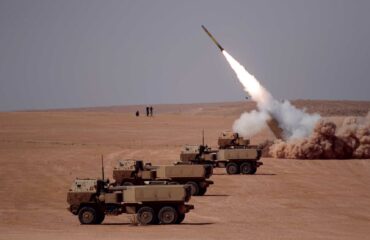What Does India’s Defense Indigenization Mean?

NEW DELHI, INDIA – In another bid to make India self-reliant in military equipment, the country’s Defence Acquisition Council recently approved the procurement of 14 products from start-ups under the Innovation for Defence Excellence (iDEX) program.
The announcement comes almost two years after the Indian defense ministry earmarked $5.2 billion for the design and development of indigenous military equipment.
In the last three years since iDEX was launched, the Indian Ministry of Defence has engaged with 132 start-ups and signed 66 contracts for prototype development, while another 30 contracts are in pipeline to be signed before December.
Just last month, the ministry approved 107 Major Line Replacement Units/Sub-systems for indigenization until December 2026, beyond which there will be an embargo on their import.
Importance of Self-Reliance
Talking to The Defense Post, Saurav Jha, a prominent commentator on energy and security, underlined the importance of India having its own military equipment and defense systems.
“The direction the world is taking and how America is behaving with its sanctions is acting as a catalyst to fast pace indigenization,” said Jha, who runs a podcast called Indigenization Appreciation Hour.
“India cannot always rely on foreign systems if it aspires to be a major power. With foreign sources, there is also a degree of freedom on how it can use weapons; there is also a huge dependency on spares, components, and upgrades, which comes at a fat price,” he added.
Banning Foreign Arms
On April 7, Indian Defence Minister Rajnath Singh released a third negative arms import list of 101 items with timelines in the next five years. This has taken the total number of items on the import ban list to 351.
Singh said the list was released to expedite self-reliance in defense.
“The import of systems, with foreign software codes, can prove to be dangerous for the security apparatus as it opens the window of vulnerability … newer defense systems and platforms are electronic and software-intensive. They can be controlled or subverted from anywhere,” he said.
Own Military Equipment
On April 11, India successfully tested indigenously designed and manufactured loitering munitions at 15,000 feet in the Nubra valley of Ladakh.
These munitions are among the items listed on the “no-import list” and are 40 percent cheaper than the foreign systems.
Another Indian-developed anti-tank guided missile, HELINA, was successfully flight tested at a high altitude on Tuesday, including the hand-over of the first lot of Infantry Protected Mobility Vehicles to the Army Chief the same day.























